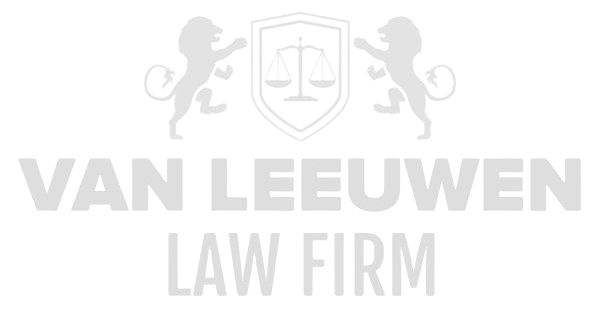The world is in a continuous state of transition, where advancements in technology, evolving societal expectations, and shifting regulatory frameworks follow one another at an increasingly rapid pace. This dynamic landscape confronts enterprises with an unprecedented challenge: the recalibration of their risk management strategies in order to remain relevant in a context that constantly reinvents itself. It is no longer sufficient to rely solely on traditional risk management approaches that focused on historical financial and operational threats. Rather, a paradigm shift is imperative—one in which risk management is deeply embedded into the core of business strategy and organizational structure. The very survival of enterprises is at stake should they fail to adequately anticipate the mounting pressure from societal stakeholders and regulatory bodies, both of which demand a transformation toward more sustainable, transparent, and future-proof business models.
This societal and regulatory pressure stems from a growing awareness of the profound impact businesses have on the environment, social equity, and the governance structures within which they operate. Climate change, biodiversity loss, social inequality, and a lack of transparency in governance are no longer peripheral concerns; they have moved to the forefront of the agendas of regulators and civil society alike. This evolution compels organizations to expand their focus beyond mere financial performance to encompass their environmental and social footprints, as well as the mechanisms through which they are held accountable. Simultaneously, the technological revolution—driven by exponential growth in digitization and an ever-expanding cyber threat landscape—demands a fundamental reassessment of risk management capabilities. New risks such as cyberattacks, data breaches, and technological disruptions require a level of readiness that traditional risk categories are ill-equipped to address. The convergence of these developments renders the perpetuation of outdated risk management models strategically reckless; only through genuine transformation can businesses remain sustainable, resilient, and cost-effective.
Climate, Environmental, and Social Risks: The New Frontiers of Corporate Responsibility
Concerns regarding climate and environmental degradation are no longer merely ethical considerations; they have become central components of corporate risk management. Enterprises face increasingly stringent requirements pertaining to carbon emissions, the energy transition, circular economy initiatives, and the conservation of natural ecosystems. Failing to address these risks adequately can result not only in reputational harm but also in tangible financial consequences, including fines, restricted access to capital, and the termination of commercial agreements. The complexity of these risks lies in their multifaceted nature: they manifest as physical risks, such as extreme weather events that disrupt supply chains, as well as transition risks, such as changes in legislation, market demands, and consumer behavior. This necessitates a thorough analysis of the entire value chain and a holistic approach that embeds environmental considerations into strategic decision-making.
In parallel with environmental imperatives, social risks are also asserting a more prominent role in shaping organizational priorities. Issues such as labor conditions, human rights, diversity, and inclusion are no longer regarded as optional or secondary. Rather, they represent essential prerequisites for operational continuity and societal legitimacy. Organizations that neglect to uphold social norms and ethical standards expose themselves to serious reputational damage, legal repercussions, and erosion of stakeholder trust. Managing these risks demands a cultural transformation and a sharpened emphasis on transparency and accountability. This requires embedding social compliance mechanisms across all organizational levels and establishing robust systems for continuous monitoring and public reporting.
Governance risks, which stem from deficient corporate oversight structures, conflicts of interest, and inadequate supervisory mechanisms, comprise a third essential pillar in today’s risk environment. Sound corporate governance is indispensable for ensuring integrity, transparency, and fiduciary accountability. Failures in governance can result in catastrophic financial and legal outcomes, including fraud, regulatory sanctions, and reputational ruin. Strengthening governance is not merely a matter of regulatory compliance; it necessitates the cultivation of an ethical organizational culture and the institutionalization of rigorous control and reporting systems. Such a transformation demands a fundamental rethinking of how governance and oversight are organized and executed across the enterprise.
Cyber and Technological Risks: The Invisible Threats of a Digitized World
The digital revolution has fundamentally reshaped how businesses operate, introducing an era of boundless opportunity, efficiency, and innovation. Yet with these advancements comes a proliferation of novel risks that threaten the very foundations of business continuity. Cyber threats—ranging from ransomware attacks and data breaches to systemic failures in critical IT infrastructure—are no longer hypothetical scenarios but harsh daily realities. The fallout from a successful cyberattack can be catastrophic: financial loss, exposure of sensitive data, operational paralysis, and irreparable reputational harm. Effectively managing these risks requires a proactive, multi-layered security strategy that extends beyond technical controls to include governance structures, organizational awareness, and responsive crisis protocols.
In addition to cyber risks, enterprises face complex challenges in responsibly deploying emerging technologies such as artificial intelligence, blockchain, and the Internet of Things (IoT). These innovations introduce new vulnerabilities, not only in terms of security but also from ethical, legal, and compliance perspectives. Addressing technological risk effectively demands an interdisciplinary approach wherein legal experts, technologists, and business strategists collaborate to identify and mitigate risks early in the innovation lifecycle. The analysis must go beyond opportunity mapping to include careful consideration of societal impacts and the evolving legal frameworks governing emerging technologies.
The digital transformation also redefines the methods and systems used to measure, monitor, and report on risk. Legacy risk management processes are often ill-equipped to handle real-time data flows or anticipate cyber threats with the necessary speed and precision. Organizations that neglect to modernize these capabilities expose themselves to sudden and potentially devastating incidents. Investments in digital monitoring tools, data analytics, and advanced cybersecurity frameworks are therefore essential. A fully integrated model—wherein risk management is aligned with IT security and operational governance—is vital for ensuring business resilience and safeguarding continuity.
Behavioral Risks: The Hidden Drivers of Compliance and Reputation
Alongside more visible risk categories such as environmental and technological hazards, behavioral risks play an increasingly critical role in shaping the modern risk landscape. These risks materialize in the form of unethical conduct, fraud, corruption, and regulatory non-compliance—frequently rooted in deficient corporate culture and the absence of adequate internal controls. Such risks are difficult to quantify and require a nuanced understanding of human behavior and organizational dynamics. Companies that fail to invest in strengthening internal ethics and integrity at both the leadership and employee levels face elevated exposure to regulatory sanctions, reputational damage, and the loss of stakeholder confidence.
Managing behavioral risks goes beyond the imposition of policies and procedures. It involves the creation of a corporate culture in which openness, accountability, and ethical conduct are standard practice. This entails that leadership consistently models ethical behavior, employees are equipped to navigate ethical dilemmas, and effective whistleblower mechanisms are firmly in place. In addition, continuous education, systematic monitoring, and a culture of dialogue are indispensable for the early identification and mitigation of behavioral risks.
The intersection between behavioral risks and technological change also warrants close scrutiny. The rise of social media and digital communication platforms has introduced new forms of reputational risk, wherein a single careless remark or unethical act can escalate into a public crisis within hours. Digitalization demands an ongoing reassessment of behavioral norms, communication strategies, and internal control systems. Integrating behavioral risk management into the broader risk management framework is not merely advisable—it is essential for achieving strategic coherence and organizational stability.
Recalibrating the Risk Management Organization: Toward an Adaptive and Business-Aligned Model
The rapid and profound shifts in the global risk environment necessitate a complete rethinking of traditional risk management models. The conventional approach—characterized by static risk assessments and compartmentalized responsibilities—is no longer adequate to contend with the complexity and volatility of today’s threats. A modern risk management organization must be agile, capable of responding swiftly to emerging developments, and fully integrated into both strategic planning and day-to-day decision-making. This transformation requires the recalibration of roles, processes, and technologies within the broader enterprise risk function.
Risk management must no longer be seen as a standalone department but as an integral component of the enterprise’s operating model. Effective risk control must be embedded in all operational and strategic processes, with cross-functional collaboration among business units, compliance, IT, legal, and internal audit being paramount. This cross-disciplinary approach enables a holistic understanding of risks and the capacity to manage them comprehensively. It empowers organizations not only to mitigate threats but also to leverage risk as a vehicle for innovation and competitive differentiation.
Digitalization plays a central role in building a future-ready risk management capability. Sophisticated data analytics, artificial intelligence, and automation provide the tools necessary to monitor risks in real time, detect patterns, and act swiftly on anomalies. By digitizing and integrating risk management processes with strategic governance and operational execution, organizations create a powerful framework that enhances resilience, relevance, and cost-efficiency. In a world defined by constant change and uncertainty, this transformation is not a luxury but a strategic imperative for securing enterprise continuity and long-term sustainability.
Digitalization of Risk Management: The Key to Efficiency and Insight
The implementation of digital technologies within risk management offers unprecedented opportunities not only to accelerate the process but especially to improve its quality and predictability. By utilizing advanced data analysis, machine learning, and artificial intelligence, organizations can transform large volumes of data into actionable insights that make risk control more proactive and accurate. This means risks are no longer approached reactively but can be detected and mitigated at an early stage. Furthermore, digitalization opens the door to large-scale scenario analyses and stress tests, which are essential for assessing the resilience of organizations under various conditions.
In addition to increasing insight, digitalization also leads to a significant increase in operational efficiency within risk management. Routine processes such as risk identification, reporting, and compliance monitoring can be largely automated, freeing capacity for strategic analysis and advisory work. This reduces the chance of human error and significantly speeds up decision-making. Through digital integration, a transparent overview of risks and controls is created, accessible to all relevant stakeholders within the organization. This not only fosters collaboration but also accountability and trust.
However, achieving a successful digital transformation within risk management is no simple task. It requires a thoughtful approach in which technology is seamlessly connected with human insight and organizational culture. Investments in technology must be accompanied by training and changes in working methods. Only then can digitalization truly contribute to a more robust and effective risk management tailored to today’s complex reality.
Aligning Risk Management with the Business: Strategic Alignment as a Prerequisite for Success
The effectiveness of risk management is largely determined by the extent to which it is aligned with the strategic goals and operational reality of the organization. Risks can only be adequately controlled if they are understood within the context of business strategy and if risk management is seen as a facilitating rather than an obstructive factor. This means risk management must be integrated into business processes and risk managers must work closely with business leaders to identify, evaluate, and mitigate risks in a manner that aligns with strategic ambitions and the market environment.
Effective alignment requires a cultural shift in which risk awareness is not the exclusive domain of a separate department but a shared responsibility of all employees, from the shop floor to the executive board. This creates an environment where risks are discussed in a timely manner and connected with opportunities and innovation. It also fosters an agile organization that can quickly respond to new developments and translate them into sustainable value creation.
Furthermore, aligning risk management with the business requires ongoing dialogue between risk management, strategy, compliance, and operational functions. This multidisciplinary collaboration makes it possible to assess risks from different perspectives and develop integrated solutions. Only through this synergy does a risk management model emerge that not only offers protection but also enhances the ability to seize opportunities and grow sustainably.
Cost-Effectiveness in Risk Management: Balancing Risk, Investment, and Value Creation
In a world where resources are always limited, it is crucial that risk management is not only effective but also cost-efficient. This means organizations must consciously weigh the efforts and investments made to control risks against the value that results. Overinvestment in risk management leads to unnecessary costs and bureaucracy, while underinvestment exposes the organization to unacceptable risks and potential crises.
A cost-effective approach requires a sharp insight into which risks have the greatest impact on the organization and which control measures are most effective. Risk prioritization based on objective criteria, supported by data analysis and scenarios, helps to deploy resources in a targeted manner. The organization must also continuously assess whether the chosen measures align with the changing risk environment and strategic objectives.
Moreover, cost-effectiveness should not lead to a purely cost-cutting approach but should be seen as part of broader value creation. By effectively controlling risks, organizations can prevent unforeseen losses, limit reputational damage, and strengthen stakeholder confidence. In this way, cost-effective risk management directly contributes to sustainable growth and resilience of the enterprise.
Strategy Execution: Risk Management as the Engine of Sustainable Entrepreneurship
The ultimate goal of a transformed risk management organization is to facilitate and enable the execution of business strategy within a context of sustainability and resilience. Risk management should no longer be seen as an administrative burden but must be a strategic and operational engine that helps the organization navigate confidently in a world full of uncertainties. By identifying and managing risks in time, organizations can better anticipate changes, embrace innovations, and simultaneously fulfill their social responsibilities.
This requires a holistic approach in which risk management is not only about avoiding damage but also about creating new opportunities. It means that risks are seen as an integral part of strategic decision-making and that risk information is used to support and optimize strategic choices. In this way, risk management contributes to realizing sustainable value for all stakeholders, including customers, employees, investors, and society.
Finally, this approach requires continuous alertness and a culture of ongoing learning and improvement. Organizations that transform their risk management function into a proactive, integrated, and business-oriented role position themselves not only as resilient and future-proof enterprises but also as responsible and reliable actors within society. This is the true meaning of risk & compliance transformation in today’s world.
Final Reflection: The Inevitable Transformation of Risk & Compliance
The necessity for a fundamental transformation of risk and compliance functions is undeniable and irreversible in today’s business world. Organizations operate in an environment characterized by unprecedented dynamism, increasing societal expectations, and a complex web of regulations. The old models of risk management—often static, fragmented, and reactive—no longer meet the demands of this era. It is a matter of survival to completely rethink, digitize, and seamlessly integrate risk management within the company’s strategy and daily operations.
This transformation is neither a simple process nor merely a technological upgrade. It requires a profound reconsideration of the role and positioning of risk & compliance within the organization, focusing on culture, mindset, and leadership. Only through a holistic approach—where technology, human capital, and strategic vision converge—can a resilient organization emerge that not only controls risks but also leverages them as a catalyst for innovation and sustainable growth.
At its core, the transformation of risk & compliance forms an indispensable foundation for future-proof business. It is an invitation to view the risk domain not as a burden or cost center but as a source of insight, guidance, and value creation. Organizations that embrace this challenge position themselves as frontrunners in an era where sustainability, transparency, and social responsibility are the norm. In doing so, risk & compliance becomes not just a function but a strategic asset that lays the groundwork for long-term success and societal legitimacy.








